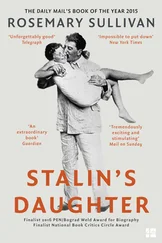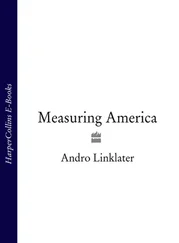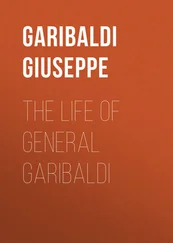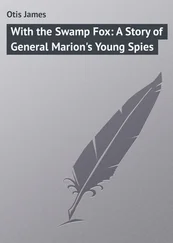Even Kentucky’s attorney general, Harry Innes, was convinced that “this country will in a few years Revolt from the Union and endeavor to erect an Independent Government.” His belief was loudly endorsed by his client James Wilkinson. But before the convention could discuss the matter, a new Indian attack across the Ohio called away so many delegates to join in the defense of their homes that proceedings had to be abandoned, leaving the great question unanswered for another year.
Most delegates felt frustrated, but Wilkinson reacted differently. Late in 1786 he asked John Marshall, Humphrey’s cousin, then a member of the Virginia assembly, to persuade the governor, Edmund Randolph, to issue him a passport to visit New Orleans. When Randolph refused, Wilkinson approached the Spanish minister, Gardoqui, again with no success. His purpose became clear in December when he wrote for a third time, now addressing Francisco Cruzat, commandant of the Spanish fort at St. Louis.
The tone of his message was strikingly different from that of his public speeches. It contained no hint of dislodging Spanish garrisons, but instead offered regrets for the behavior of General George Rogers Clark, who had destroyed three Spanish boats earlier in the year in retaliation for the confiscation of two Kentucky flatboats carrying flour. Clark’s action was “an outrage . . . generally disavowed here,” Wilkinson assured Cruzat, and as evidence of his good intentions he added a warning that “a certain Colonel Green and other desperate adventurers are meditating an attack of the posts of his most Catholic Majesty at Natchez.” Wilkinson concluded by promising that he would “do eveything in our power here to foil this band.” Almost as an afterthought, he added the hope that his warning could be passed on to Don Esteban Miró, governor of Louisiana.
By the beginning of 1787, while ice still blocked the Ohio River, his intentions were generally known in Kentucky. He advertised for consignments of ham, tobacco, and butter to be carrried down the Mississippi for sale in New Orleans. Spain might not be prepared to open up the river to Kentucky traders, and the United States might be reluctant to intervene, but James Wilkinson was proposing to defy both sides and strike a blow “for the rights of navigation and free trade.” That was authentic frontier behavior, to do what seemed right regardless of what the authorities wanted. When his fifty- foot-long flatboat with its cargo of Kentucky goods floated away from the dock at the Falls of the Ohio in April 1787, Humphrey Marshall recorded that Wilkinson left behind crowds of Kentucky settlers “enraptured with his spirit of free enterprise and liberality, not less than his unbounded patriotism.”
8
SPANISH TEMPTATION
AT THE AGE OF THIRTY, James Wilkinson was no longer the young genius whose boundless enthusiasm won the hearts of susceptible generals. Yet his plans still crucially depended on the impact of his personal appeal. The first test came when he and his twenty-strong crew came within range of the cannon in the Spanish fort of St. Louis. They were clearly breaking the ban imposed in 1783 on all vessels except those flying the Spanish flag. The fort’s commander had the power to confiscate their cargo and their boat, a potential loss of about five thousand dollars, and the two Kentucky flatboats had been seized in these very circumstances the previous year. But the chief danger was to Wilkinson’s dreams. For him, this voyage was only the first step toward making his fortune. What he hoped to gain was “the privilege of furnishing a considerable annual supply of tobacco to the Mexican market which would have secured immense fortunes for me and my friends.”
Within the bureaucratic structure of Spain’s colonial service, the status of Francisco Cruzat, who commanded the fort and its galleys, could hardly have been lower. It was dictated by the remote location of St. Louis on the uttermost edge of the empire. His immediate superior was Carlos de Grand- Pré, the commander of the Natchez region, comprising modern Alabama and Mississippi, who was himself subject to the orders of Esteban Miró in New Orleans, governor of Louisiana and West Florida. He in turn fell under the supervision of Luis Las Casas, the captain general in Havana, Cuba, who ranked alongside the viceroy of Mexico as one of the two greatest officials north of the equator in the mightiest power west of the Atlantic. Above the captain general existed only the royal council in Madrid, and in particular the minister for the Indies, under the direction of His Catholic Majesty Carlos III.
The gigantic extent of the Spanish empire, already stretching from Tierra del Fuego at the southern tip of South America to the Great Lakes and Canada in the north, had been swollen still farther by its participation in the war of American independence. Indeed, apart from the United States, no country gained more from the conflict. In 1781 Spanish forces seized British forts along the Gulf Coast and up the Mississippi Valley, and as part of the peace negotiations, Britain ceded to Spain modern Florida and the Gulf Coast— then known as East and West Florida. The border with the United States was ill- defined—in 1782 a Spanish diplomat insisted it ran just west of the Appalachians as far as the Ohio River, “thence round the western shores of Lakes Erie and Huron and thence round Lake Michigan.” The exact details might be open to dispute, but no one doubted that both banks of the Mississippi and the river itself lay under Spanish control. When Wilkinson’s crew poled the flatboat to shore at St. Louis in May 1787, the colossus was at the peak of its power and, in North America alone, claimed an area three times that of the United States.
Despite his inferior position, Cruzat was also the gatekeeper to this mighty empire. He had decided Wilkinson’s letter deploring the seizure of Spanish vessels was significant enough to send on to Natchez, and thus he was prepared to let its writer land at St. Louis. The good impression created by the letter, however, was nothing compared to the effect of the present Wilkinson brought with him, two Virginia thoroughbred horses. And if the American’s ease and polished manners had the same effect on the lowly commander as they did on his superiors, Cruzat must have been overwhelmed. Certainly he provided Wilkinson with an official passport as far as Natchez, together with an effusive letter of recommendation to its commandant, Grand-Pré. Once inside the empire, Wilkinson’s preparations and personality became irresistible. At Natchez, Grand-Pré was especially grateful for the warning against Thomas Green, who claimed that the settlement was really part of Georgia. When Wilkinson arrived armed with Cruzat’s recommendation, Grand-Pré not only received him warmly but sent him on to New Orleans with an even more supportive document addressed directly to Miró. By the time his cargo reached the dockside there on the last day of June, a cascade of approval ensured that Wilkinson would at least be listened to by the man who controlled the Mississippi.
He was escorted to Government House by the corporal of the guard and presented to Esteban Miró and his intendant, or chief financial officer, Martín Navarro. Both were men of exceptional quality. Each had risen through the service on merit alone— Miró as a soldier and Navarro as an accountant—and together were engaged in a concerted drive to change Spain’s existing strategy of limiting the movement of goods and people in North America.
What drove Spanish policy was the need to protect Mexico’s rich silver mines in Zacatecas and the northern province of Nueva Vizcaya. Their output was worth as much as seventeen million dollars a year, according to the German explorer Alexander von Humboldt, the largest source of silver in the world and almost half the total value of the empire’s exports. The only purpose of Louisiana, along with Texas and New Mexico, was to provide a barrier against any threat to Mexico from the north. Consequently, entry had been denied to all but approved immigrants, and trade was restricted to what was required by the direction of the captain general in Havana. It cost about five hundred thousand dollars a year to maintain Louisiana, a colony that had fewer than thirty thousand inhabitants, but the silver justified the outlay.
Читать дальше












